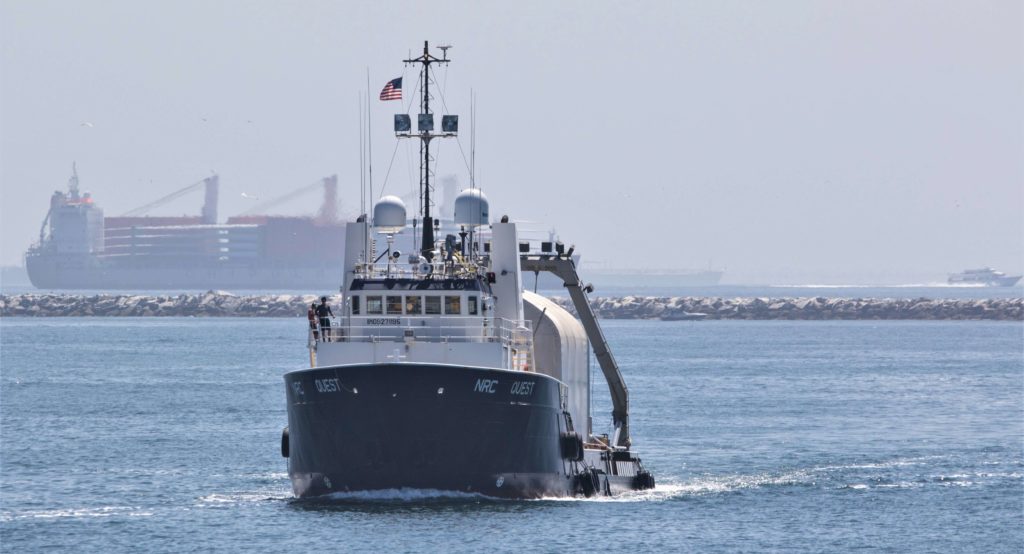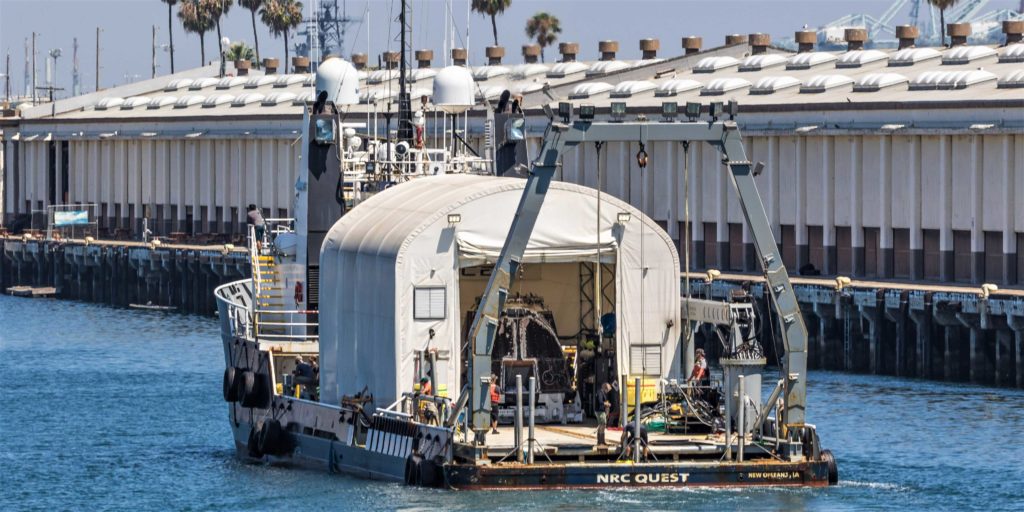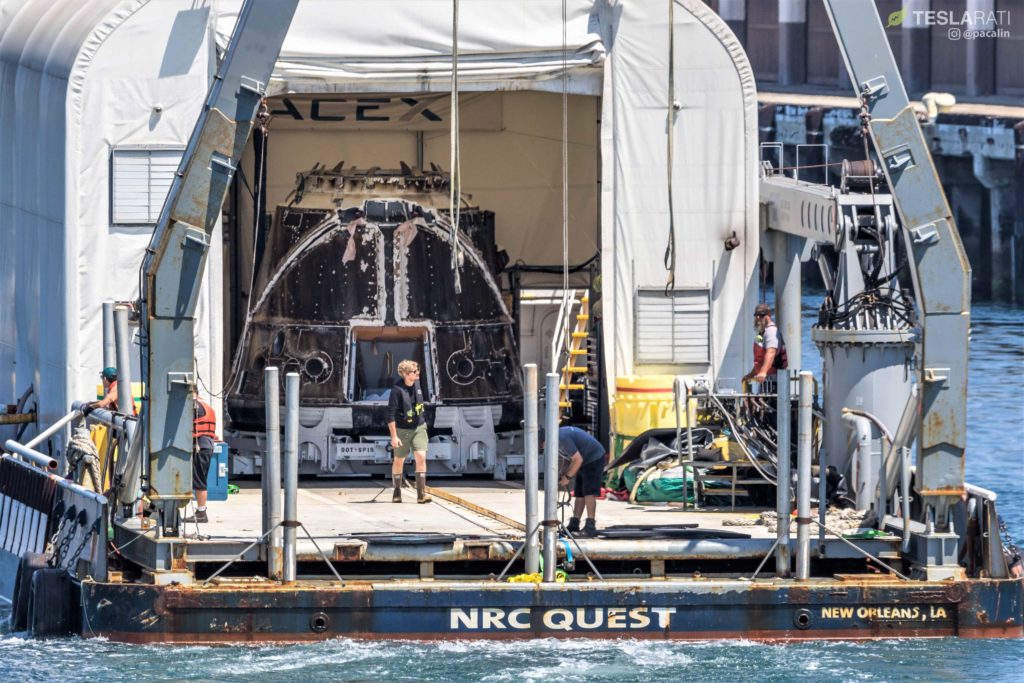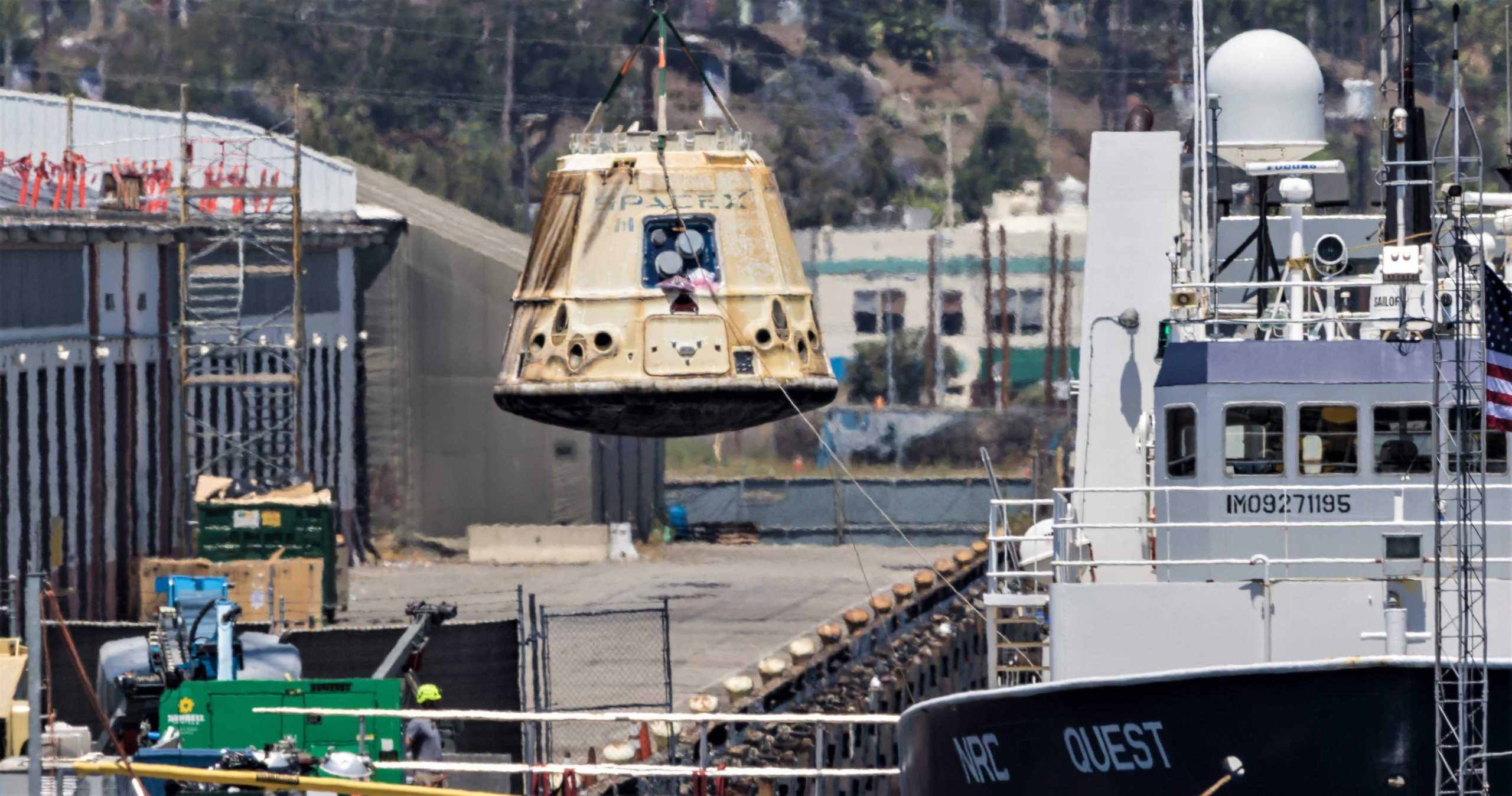
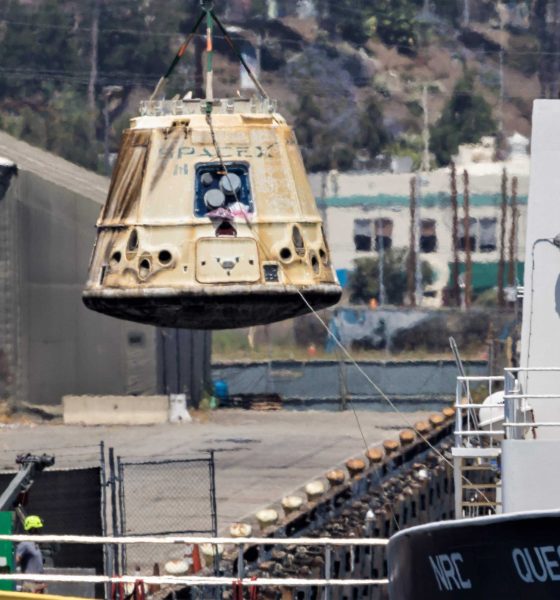
News
SpaceX’s Cargo Dragon spacecraft returns to Earth after second orbital mission
SpaceX’s workhorse Cargo Dragon spacecraft has returned from its 16th successful mission to orbit, in this case as the fourth flight-proven Dragon capsule.
CRS-15 carried several thousand pounds of cargo to the International Space Station on June 29 and transported a roughly equivalent amount of invaluable cargo and scientific experiments from orbit back to Earth – incredibly, SpaceX’s Cargo Dragon is currently the only operational spacecraft in the world able to return an appreciable amount of (non-human) cargo back to Earth. The toasty-looking vehicle was captured after a soft landing in the Pacific Ocean and transported back to Port of San Pedro aboard SpaceX vessel NRC Quest between August 3rd and 5th.
SpaceX’s Dragon capsule is back at Port of LA, full of science, after a month spent at the International Space Station. #spacex #nasa pic.twitter.com/jWhZQTubgK
— Pauline Acalin (@w00ki33) August 5, 2018
Cargo Dragon is the only commercial orbital spacecraft in history that has been reused and stands in the company of a tiny handful of reusable orbital vehicles built or procured by countries, including the Space Shuttle, a one-off Mercury capsule reflight, and a few others. While most of each Cargo Dragon can be reused, the rear segment (known as a trunk) will always be expended, and the vehicle’s parachutes and heatshield also have to be replaced after each ocean recovery.
Still, the vast majority of the cost and effort that goes into producing and operationalizing Cargo Dragon is contained within the capsule itself, including extremely sensitive electronics, docking equipment, aluminum, titanium, and carbon composite structures, and its 12 Draco thrusters for maneuvering on orbit, as well as propellant tanks and many dozens of other long-lead components.
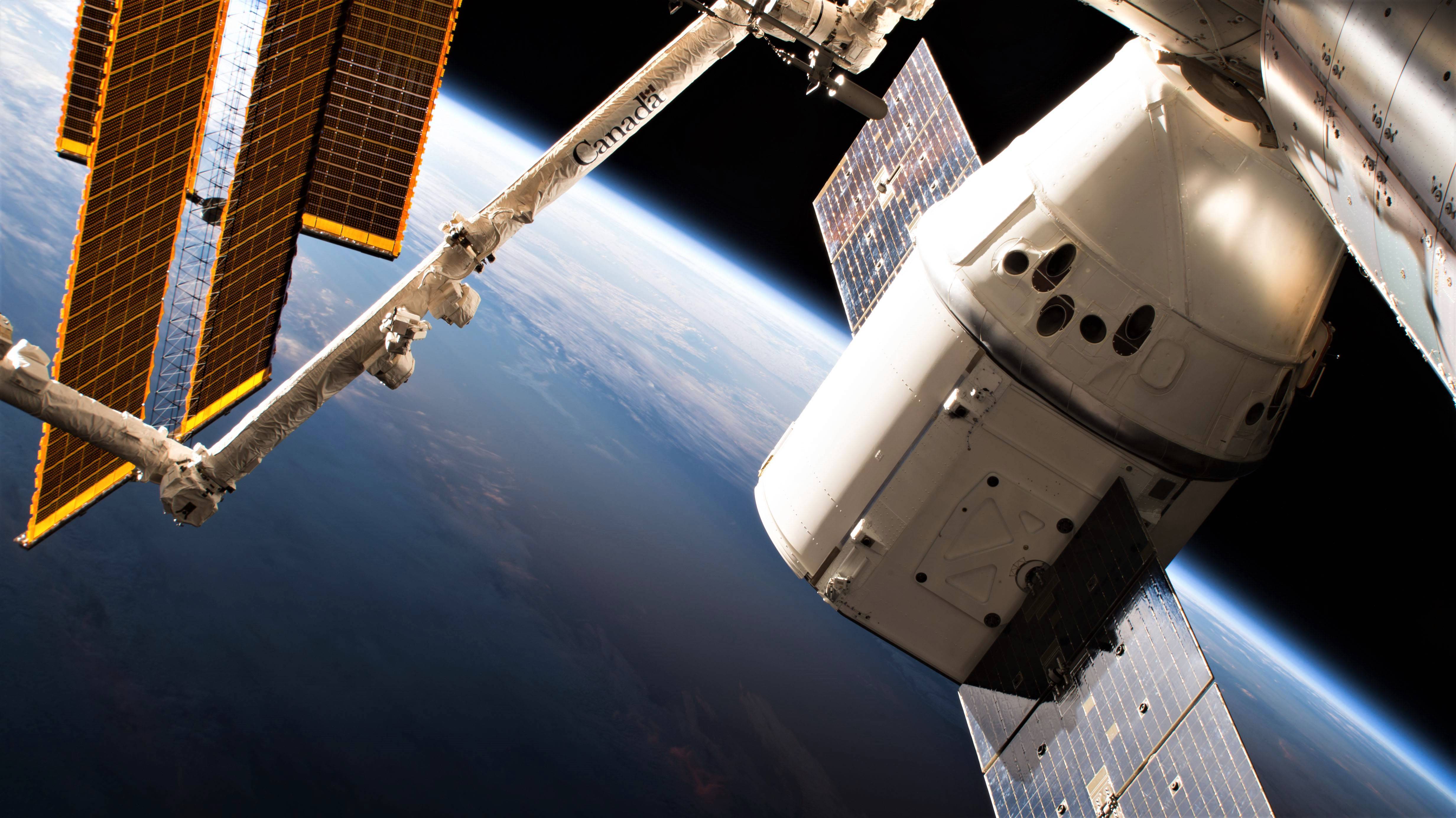
According to CEO Elon Musk and COO Gwynne Shotwell, Cargo Dragon was certified from the start with a spacecraft lifespan of three orbital missions, and SpaceX now has four Cargo Dragon capsules in various states of storage or refurbishment, some readying for their third and final launches over the next eighteen months. Aside from those twice-flown Dragons, three once-flown capsules remain in the flight-proven Dragon roost – more than enough to complete the five cargo missions remaining in SpaceX’s CRS-1 (Commercial Supply Services) contract. CRS-1’s last (20th) contracted mission is currently scheduled for early 2020, after which a modified version of Cargo Dragon (Dragon 2) will take over all future SpaceX resupply missions to the ISS.
- SpaceX’s CRS-15 Cargo Dragon returns to Port of San Pedro, 08/05/18. (Pauline Acalin)
- SpaceX’s CRS-15 Cargo Dragon returns to Port of San Pedro, 08/05/18. (Pauline Acalin)
- SpaceX’s CRS-15 Cargo Dragon returns to Port of San Pedro, 08/05/18. (Pauline Acalin)
- Cargo Dragon C110 is craned from NRC Quest to SpaceX’s Port of San Pedro berth, 08/05/18. (Pauline Acalin)
Back at the docks, Teslarati photographer Pauline Acalin managed to capture some gorgeous noon-lit photos of Cargo Dragon capsule C110’s (Dragon 1, serial #10) return from the Pacific to Port of San Pedro, even catching a rare glimpse of the capsule’s extra toasty rear and parachute compartment as SpaceX vessel NRC Quest sailed by. Patience further paid off, and she was able to watch as the capsule was craned from Quest to dock and later caught a few close-ups of the spacecraft before it was rushed under cover to extricate dozens of time-sensitive scientific experiments and offload several thousand pounds of miscellaneous cargo.
SpaceX’s next Cargo Dragon launch is targeting the end of November 2018 and will mark the spacecraft’s first launch atop Falcon 9 Block 5, likely with both a flight-proven booster and capsule.
For prompt updates, on-the-ground perspectives, and unique glimpses of SpaceX’s rocket recovery fleet (including fairing catcher Mr Steven) check out our brand new LaunchPad and LandingZone newsletters!

News
Man credits Grok AI with saving his life after ER missed near-ruptured appendix
The AI flagged some of the man’s symptoms and urged him to return to the ER immediately and demand a CT scan.

A 49-year-old man has stated that xAI’s Grok ended up saving his life when the large language model identified a near-ruptured appendix that his first ER visit dismissed as acid reflux.
After being sent home from the ER, the man asked Grok to analyze his symptoms. The AI flagged some of the man’s symptoms and urged him to return immediately and demand a CT scan. The scan confirmed that something far worse than acid reflux was indeed going on.
Grok spotted what a doctor missed
In a post on Reddit, u/Tykjen noted that for 24 hours straight, he had a constant “razor-blade-level” abdominal pain that forced him into a fetal position. He had no fever or visible signs. He went to the ER, where a doctor pressed his soft belly, prescribed acid blockers, and sent him home.
The acid blockers didn’t work, and the man’s pain remained intense. He then decided to open a year-long chat he had with Grok and listed every detail that he was experiencing. The AI responded quickly. “Grok immediately flagged perforated ulcer or atypical appendicitis, told me the exact red-flag pattern I was describing, and basically said “go back right now and ask for a CT,” the man wrote in his post.
He copied Grok’s reasoning, returned to the ER, and insisted on the scan. The CT scan ultimately showed an inflamed appendix on the verge of rupture. Six hours later, the appendix was out. The man said the pain has completely vanished, and he woke up laughing under anesthesia. He was discharged the next day.
How a late-night conversation with Grok got me to demand the CT scan that saved my life from a ruptured appendix (December 2025)
byu/Tykjen ingrok
AI doctors could very well be welcomed
In the replies to his Reddit post, u/Tykjen further explained that he specifically avoided telling doctors that Grok, an AI, suggested he get a CT scan. “I did not tell them on the second visit that Grok recommended the CT scan. I had to lie. I told them my sister who’s a nurse told me to ask for the scan,” the man wrote.
One commenter noted that the use of AI in medicine will likely be welcomed, stating that “If AI could take doctors’ jobs one day, I will be happy. Doctors just don’t care anymore. It’s all a paycheck.” The Redditor replied with, “Sadly yes. That is what it felt like after the first visit. And the following night could have been my last.”
Elon Musk has been very optimistic about the potential of robots like Tesla Optimus in the medical field. Provided that they are able to achieve human-level articulation in their hands, and Tesla is able to bring down their cost through mass manufacturing, the era of AI-powered medical care could very well be closer than expected.
News
Tesla expands Model 3 lineup in Europe with most affordable variant yet
The Model 3 Standard still delivers more than 300 miles of range, potentially making it an attractive option for budget-conscious buyers.

Tesla has introduced a lower-priced Model 3 variant in Europe, expanding the lineup just two months after the vehicle’s U.S. debut. The Model 3 Standard still delivers more than 300 miles (480 km) of range, potentially making it an attractive option for budget-conscious buyers.
Tesla’s pricing strategy
The Model 3 Standard arrives as Tesla contends with declining registrations in several countries across Europe, where sales have not fully offset shifting consumer preferences. Many buyers have turned to options such as Volkswagen’s ID.3 and BYD’s Atto 3, both of which have benefited from aggressive pricing.
By removing select premium finishes and features, Tesla positioned the new Model 3 Standard as an “ultra-low cost of ownership” option of its all-electric sedan. Pricing comes in at €37,970 in Germany, NOK 330,056 in Norway, and SEK 449,990 in Sweden, depending on market. This places the Model 3 Standard well below the “premium” Model 3 trim, which starts at €45,970 in Germany.
Deliveries for the Standard model are expected to begin in the first quarter of 2026, giving Tesla an entry-level foothold in a segment that’s increasingly defined by sub-€40,000 offerings.
Tesla’s affordable vehicle push
The low-cost Model 3 follows October’s launch of a similarly positioned Model Y variant, signaling a broader shift in Tesla’s product strategy. While CEO Elon Musk has moved the company toward AI-driven initiatives such as robotaxis and humanoid robots, lower-priced vehicles remain necessary to support the company’s revenue in the near term.
Reports have indicated that Tesla previously abandoned plans for an all-new $25,000 EV, with the company opting to create cheaper versions of existing platforms instead. Analysts have flagged possible cannibalization of higher-margin models, but the move aims to counter an influx of aggressively priced entrants from China and Europe, many of which sell below $30,000. With the new Model 3 Standard, Tesla is reinforcing its volume strategy in Europe’s increasingly competitive EV landscape.
News
Tesla FSD (Supervised) stuns Germany’s biggest car magazine
FSD Supervised recognized construction zones, braked early for pedestrians, and yielded politely on narrow streets.
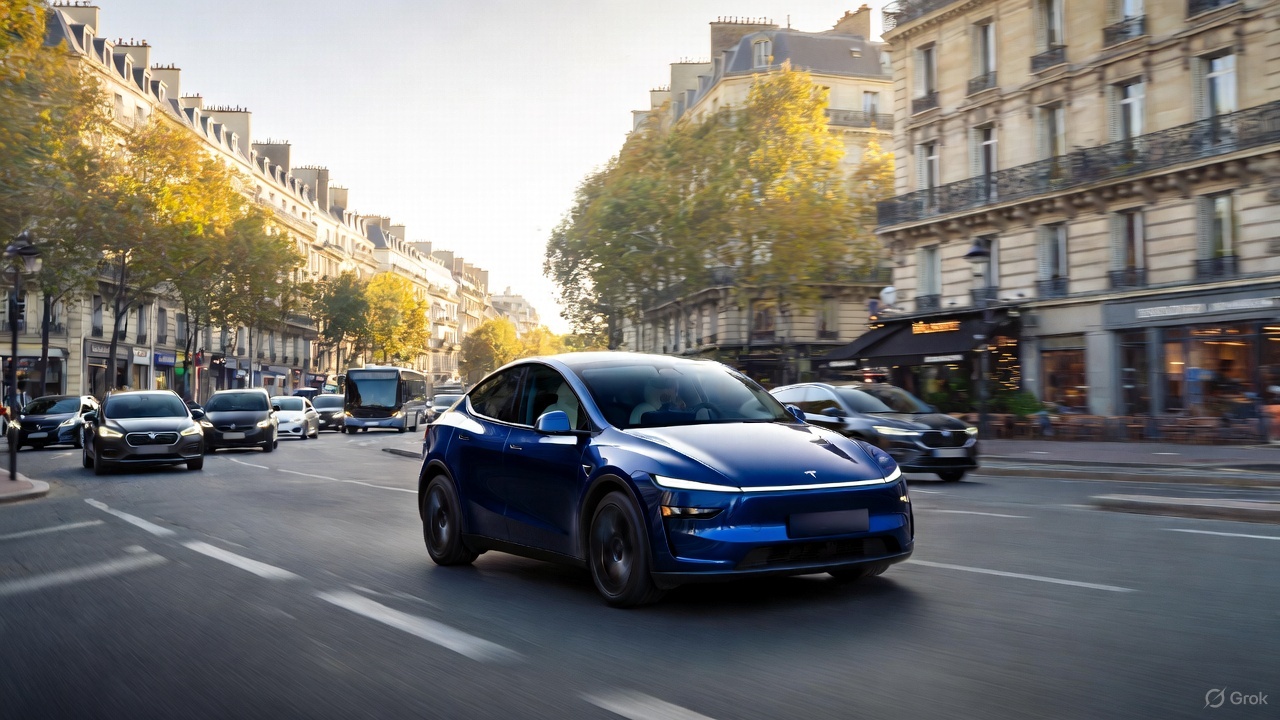
Tesla’s upcoming FSD Supervised system, set for a European debut pending regulatory approval, is showing notably refined behavior in real-world testing, including construction zones, pedestrian detection, and lane changes, as per a recent demonstration ride in Berlin.
While the system still required driver oversight, its smooth braking, steering, and decision-making illustrated how far Tesla’s driver-assistance technology has advanced ahead of a potential 2026 rollout.
FSD’s maturity in dense city driving
During the Berlin test ride with Auto Bild, Germany’s largest automotive publication, a Tesla Model 3 running FSD handled complex traffic with minimal intervention, autonomously managing braking, acceleration, steering, and overtaking up to 140 km/h. It recognized construction zones, braked early for pedestrians, and yielded politely on narrow streets.
Only one manual override was required when the system misread a converted one-way route, an example, Tesla stated, of the continuous learning baked into its vision-based architecture.
Robin Hornig of Auto Bild summed up his experience with FSD Supervised with a glowing review of the system. As per the reporter, FSD Supervised already exceeds humans with its all-around vision. “Tesla FSD Supervised sees more than I do. It doesn’t get distracted and never gets tired. I like to think I’m a good driver, but I can’t match this system’s all-around vision. It’s at its best when both work together: my experience and the Tesla’s constant attention,” the journalist wrote.
Tesla FSD in Europe
FSD Supervised is still a driver-assistance system rather than autonomous driving. Still, Auto Bild noted that Tesla’s 360-degree camera suite, constant monitoring, and high computing power mark a sizable leap from earlier iterations. Already active in the U.S., China, and several other regions, the system is currently navigating Europe’s approval pipeline. Tesla has applied for an exemption in the Netherlands, aiming to launch the feature through a free software update as early as February 2026.
What Tesla demonstrated in Berlin mirrors capabilities already common in China and the U.S., where rival automakers have rolled out hands-free or city-navigation systems. Europe, however, remains behind due to a stricter certification environment, though Tesla is currently hard at work pushing for FSD Supervised’s approval in several countries in the region.
